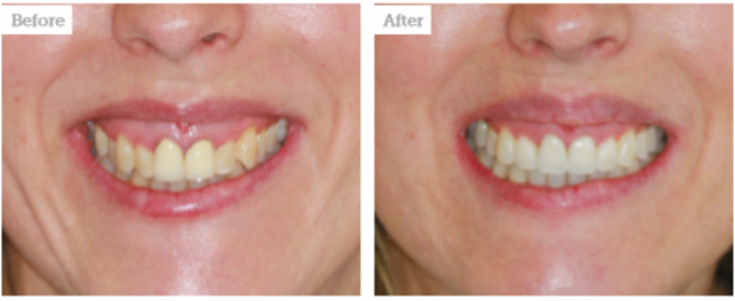Gingival smile – the cause of psychological discomfort and self-doubt for many patients. Traditionally, dental and surgical techniques are used to eliminate this aesthetic defect, but modern estheticians also have drugs in their arsenal that can be effective for a number of patients. However, it is important for the practitioner to correctly identify the cause of the problem and to be able to identify cases where a multi- or interdisciplinary approach is needed to obtain optimal results. In this article estet-portal.com, Dr. Mark Hughes talks about the causes of formation, diagnostic methods and correction of a gingival smile.
- Diagnostics and indications for correction of gingival smile
- Causes of gingival smile formation in patients
- Injectable gum smile correction: botulinum toxin preparations and dermal fillerss
Diagnostics and indications for gingival smile correction
It is generally accepted that visualization of no more than 2 mm of gum tissue is aesthetically attractive in a full spontaneous smile.
People who show more gum when smiling may experience psychological discomfort that causes them to try to control their smile in an attempt to hide imperfections.

Fig. 1 An example of restoring the aesthetics of teeth instead of correcting a gingival smile
It should be noted that the only indication for the correction of a gingival smile is the desire of the patient.
Before proceeding with the choice of methods for correcting a gingival smile, the practitioner must identify the etiology of the defect.
How to correct lips: expert advice on choosing a method
The only indication for gingival smile correction is the patient's desire.
Being a cosmetic dentist, the author notes that a gingival smile often worries patients with discoloration or other aesthetic defects of the teeth. Therefore, based on his own experience, the doctor recommends first restoring the aesthetic appeal of the dentition and only after that, if the problem is still relevant for the patient, proceed directly to the correction of the gingival smileand.
Causes of gingival smile formation in patients
There are at least seven reasons for the formation of a gingival smile, and if its exact etiology is not established, an incorrectly chosen procedure can lead to an unnatural result, which will only aggravate the patient's psychological discomfort.
Based on my own experience, the author notes that the most common reasons for the formation of a gingival smile are:
- short upper lip;
- excess gum tissue;
- insufficient length of teeth.
All of the above factors are genetic.
Gingival recession: causes and serious consequences of tooth exposurein
Injectable gingival smile correction: botulinum toxin preparations and dermal fillers
The aim of a gingival smile correction is to reduce the amount of visualization of the gingiva, ideally – to less than 3 mm. It is important to understand that in some cases only dental or surgical intervention is advisable, however, in this article, attention will be focused on injection methods of correction – injections of botulinum toxin and dermal fillers. They are popular due to the minimal or no recovery period, as well as the more attractive price.
Injection correction of the gingival smile is appropriate in cases where the cause of its occurrence is insufficient volume or hypermobility of the upper lip.
Research suggests that botulinum toxin injections into the levator muscles of the upper lip may be an effective treatment for gingival smile correction. As a result of the injection of botulinum toxin into the muscles that raise the upper lip, their paralysis is ensured and the degree of contraction of the upper lip during a smile is reduced.
Follow us on Facebook!
Most often, the drug is injected at a point located in the recess under the ala of the nose, since it determines the superficial anatomy of the muscle that lifts the upper lip and ala of the nose. At one point, the author recommends injecting 2 & ndash; 3 units of botulinum toxin.
If the cause of a gingival smile is a thin upper lip, a dermal filler can be used to correct the problem, which allows you to increase the volume of the lip and lower its edge a little lower.

Fig. 2 Before and after botulinum toxin injection to correct a gingival smile for upper lip hypermobility (photo by Dr. Peter McQuillan, Harley Street Dental Studio)
Injection correction of the gingival smile is appropriate in cases where the cause of its occurrence is insufficient volume or hypermobility of the upper lip.
All 32: Gingival or Gingival Smile Correction
It is important to understand that the effect of injection procedures is temporary, and it is necessary to repeat them every 3–6 months– the patient must be warned about this.
If the gingival smile is caused by multiple etiological factors, a multidisciplinary approach is required to obtain optimal results. A cosmetic dentist needs to know when to see a cosmetic dentist and vice versa.
Adapted from Aesthetics.







Add a comment